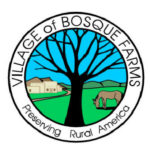Letter to irrigators
Editor:
The staff at the district is very grateful for the cooperation and support we have received from all of you for recognizing the water shortage situation and pulling together to help us manage, at times, the meager supplies.
We’ve done well under the circumstances, and we thank you for doing your part. As you all are aware, the 2021 water situation was initially looking to be of short supply as early as late June but the early and sustained monsoon rains that began in late June and continued until early August allowed for several full irrigations when it was looking like the valley would be fortunate to get only three.
The rains also allowed the district to reserve some of its San Juan-Chama water supplies that we are now using to keep the river up while we wait for another shot of monsoon moisture due this week. We are all quite grateful for this gift allowing us to sustain the middle valley for most of the irrigation season!
With that said, the last block of stored water was released on Aug. 15, so we are now totally reliant (and hopeful) on forecasted moisture to again recharge the system and allow for at least one more full irrigation for those needing it. Beyond that, it’s anyone’s guess on how long the monsoon rains will persist, but the weather experts are predicting a warmer and dryer than normal fall and early winter beginning in September.
It now looks probable that we may have to go into a brief period of prior and paramount only operations during September if and when the mainstem Rio Grande flows drop below 250 cfs at the Embudo gage. If that occurs, it is unlikely that there will be much in the way of return flows to work with unless there are rain showers freshening river flows.
Adding to these conditions is the accrued New Mexico debit to the Rio Grande Compact that is designed to apportion water between the states of Colorado, New Mexico and two irrigation districts below Caballo Dam, one in New Mexico and one in Texas and a treaty allocation to Mexico (all referred to as Texas).
The cycle of water supply over the past several years has created persistently low reservoir supplies at Elephant Butte that limits storage at El Vado Dam and Reservoir which is the District’s only reservoir for supplemental water that is so critical in supplying farm fields and the river after the runoff recedes normally in late June or early July.
New Mexico remains in debit at 96,800 acre-feet and, so far this year, the staff at the New Mexico Interstate Stream Commission has informed us that unless more rains occur, deliveries to Elephant Butte are still less than the required amount for 2021. That means that we may still add more debit this year despite the shortening of the irrigation season and operating tighter than normal.
However, if we had not taken these conservation actions, the state assures us that the debit would be much higher. If we add to the debit again this year, it will still not push us above the 200,000 acre-feet maximum allowable debit and New Mexico will still not be in violation of Article VI of the Compact.
The board of directors, concerned about the mounting debit, will be discussing the end date of the 2021 irrigation season on Aug. 20 in order to minimize the debit for 2021 and to show the Rio Grande Compact Commission that we are doing our part to help manage this historic drought in the entire upper Rio Grande basin.
After this determination, the district will rapidly inform irrigators who may be planning to plant seed for winter crops that water supplies are very limited, and it may be difficult to get everyone water even in September, but we will do what we can with what water we have.
But the bottom line is: As long as New Mexico is in debit to the Rio Grande Compact, the district will struggle to meet summer demands without access to El Vado Reservoir storage. There will likely be severe summer shortages if there is a below-average snow pack supply and limited monsoon rains.
A look ahead to the winter and spring of 2022: The National Weather Service is indicating that the North American Southwest is heading into a La Niña weather pattern that usually, but not always, means a warmer and dryer climate. It may be similar to last year’s winter with the exception that last year did not have good monsoons preceding it which this year does.
We received about a 65 percent supply of native water during the runoff and a similar percentage from the San Juan-Chama allocation and, as you know, we expected that to get us to late June before experiencing severe shortages but that did not happen thanks to timely monsoon rains.
Please use this information in planning your cropping pattern and farm operations for the remainder of this season particularly those of you planning to plant winter crops and in your plans for the coming 2022 season.
The district is taking a number of actions that includes grants that may assist farmers in managing on-farm water use and other agricultural services. Our No. 1 priority and focus is to manage available water that provides for productive agriculture and to assist farmers with efficient on-farm water use to maintain or improve high quality crop yields even in light of long-term drought.
To achieve this, the district must assist in meeting annual compact delivery requirements and remain compliant under the federal Endangered Species Act.
For more information about the district and its programs please check out the website at mrgcd.com or reach out to district staff at 505-247-0234.
Mike A. Hamman, PE
Chief Engineer/CEO
Middle Rio Grande Conservancy District
Interested in submitting a letter to the editor?
The News-Bulletin welcomes and encourages original letters to the editor, especially on local topics and issues. Shorter letters, about 350 words, are preferred.
Letters must be signed and include the writer’s address and telephone number (street address and phone number won’t be published). No letter will be published without the writer’s name.
Letters may be edited for length, spelling, grammar and legal considerations, but in all cases the writer’s intent will be maintained.
Political candidate endorsements or attacks are considered paid political advertisements and will not appear on the opinion page.
Letters that might be deemed unsuitable for publication include those that are libelous, are essentially personal attacks, are pointless, are part of an organized letter-writing campaign or are part of a mass mailing.
Qualified individuals wishing to directly reply to a News-Bulletin editorial or column are invited to contact the editor to discuss writing an op-ed piece, guest editorial or guest column.
•Write to:
Letters, News-Bulletin
221 S. Main St., Ste. B
Belen, N.M., 87002;
•Email your views to us at:
[email protected]
•Use our online form:
news-bulletin.com/site-forms
The Valencia County News-Bulletin is a locally owned and operated community newspaper, dedicated to serving Valencia County since 1910 through the highest journalistic and professional business standards. The VCNB is published weekly on Thursdays, including holidays both in print and online.

















